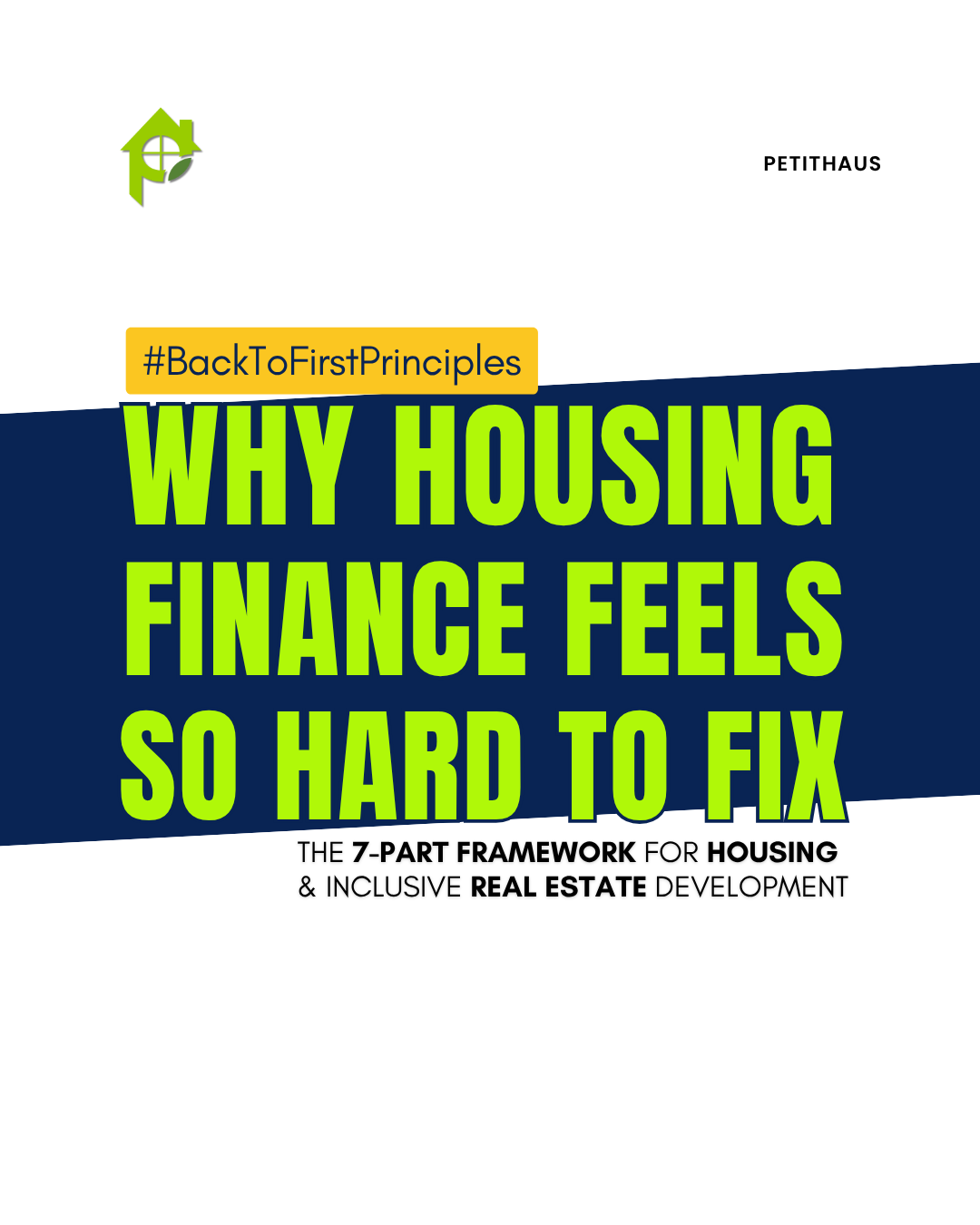
CONTACT US
Affordable Homeownership

SNEAK PEEK
The real issue isn’t money, but how money moves through the housing ecosystem. But first, let's try to understand why housing finance is such a complicated issue. And why is the real issue about how money moves through the housing ecosystem and not the money itself?
Finance sits at the heart of everything; it is the cornerstone upon which all housing programs are built. But in Nigeria, housing finance is notoriously difficult because the two sides of the equation don’t balance.
The real challenge lies in the fact that, on the demand side, most people can’t afford mortgages. On the supply side, builders can’t sell below cost. So the system literally ‘stalemates’ and locks itself in a loop where affordability and profitability rarely meet.
For home seekers, the conversation starts (and often ends) with income. Common rules of thumb shaping housing finance are:
Now, place this side by side with Nigeria’s reality that most households spend 50–60% of their income on rent, and in theory, this should already qualify them for homeownership. In practice, they still fall short. Why?
Because transitioning from renter to owner requires a down payment, stable income, and collateral… The 3 things the average middle- or low-income earner does not have. An even bigger issue is that a majority work in the informal sector without payslips or collateral. It’s no wonder access to finance remains limited.
And for this majority, the problem deepens. Without formal payslips, consistent records, or structured benefits, traditional lenders won’t touch them. So, while housing demand is high, financial eligibility remains low.
On the other side of the equation are developers, contractors, and suppliers; businesses built to make profit. Every housing unit carries a weight of land costs, materials, labor, taxes, and margins.
And so, the dream of “affordable housing” often collides with economic reality.
Selling below market rate simply isn’t viable unless there’s compensation somewhere, and that’s where subsidies come in.
The heart of the problem is this:
Nigeria sits within the topmost range of the income-to-housing-cost ratio. So, the biggest tension in housing finance isn’t just about availability of money. It’s about misaligned realities:
Solving this requires innovation, not imitation. Nigeria can’t simply copy global mortgage models. We need financing that understands our economy: flexible, community-based, and inclusive of informal earners.
Bridging this gap will require creative financing models, policy-backed subsidies, and a redesign of how we define affordability. Away from price alone, but by sustainability, accessibility, and long-term value.
That’s where subsidies come in to bridge the gap between what buyers can afford and what developers must earn. Since subsidies work on both ends:
If housing finance is the cornerstone of every housing program, then it deserves the most creative and collaborative thinking from policymakers, developers, and citizens alike. Only when income realities meet economic pragmatism can housing truly become affordable, sustainable, and inclusive.
At PetitHaus, we’re exploring models that bridge this divide, enabling people to start small, co-own land, and grow their ownership journey sustainably.
Catch the next episode on how to bridge the funding gap for affordable housing in Nigeria and make it work for cities like Lagos.
01.

02.
Category
Discover insights into creating affordable homeownership with PetitHaus.
